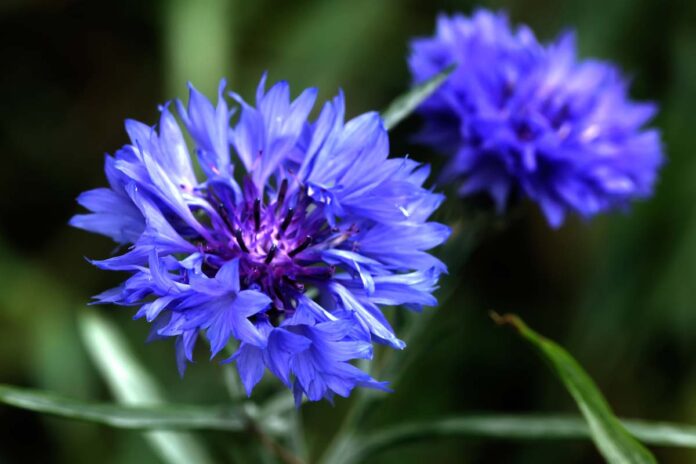Outline
- Introduction to Bachelor Button Flowers
- What are bachelor button flowers?
- Historical significance
- Types
- Common varieties
- Color variations
- Growing
- Ideal growing conditions
- Planting and care tips
- Meaning and Symbolism
- Cultural significance
- Occasions for gifting
- Uses
- Floral arrangements
- Medicinal properties
- Attracting Pollinators
- Benefits for garden ecosystems
- Companion planting
- Literature and Art
- References in poetry, literature, and paintings
- Symbolism in different cultures
- Fun Facts
- Interesting trivia
- Unique characteristics
- Tips for Preserving
- Drying and pressing techniques
- Creative crafts and décor ideas
- Folklore and Mythology
- Legends and myths associated with the flower
- Folk beliefs and superstitions
- The Role in Beekeeping
- Importance for bee populations
- Nectar and pollen resources
- Health Benefits
- Traditional medicinal uses
- Potential therapeutic properties
- Challenges in Growing
- Common pests and diseases
- Maintenance issues
- FAQs
- Conclusion
Introduction
Bachelor button flowers, scientifically known as Centaurea cyanus, are charming annuals cherished for their delicate blooms and vibrant hues. Originating from Europe, these flowers have captured the hearts of gardeners worldwide for centuries. From their rich symbolism to their ease of cultivation, they continue to enchant both novice and seasoned gardeners alike.
Types
They come in various types and colors, offering a spectrum of choices for garden enthusiasts. Common varieties include the classic blue bachelor button, also known as cornflower, as well as pink, white, and purple variations. Each type carries its unique charm, adding diversity and visual appeal to garden landscapes.
Growing
Growing them is a rewarding experience, thanks to their adaptability and low maintenance requirements. These resilient plants thrive in well-drained soil and full sun, making them ideal additions to garden borders, containers, or wildflower meadows. Sow seeds directly in the garden after the last frost date, and provide consistent moisture until seedlings establish.
Meaning and Symbolism
Beyond their aesthetic allure, they hold cultural significance and symbolism in various societies. Historically, these flowers symbolize bachelorhood, hence their name, but they also represent delicacy, refinement, and freedom. In folklore, bachelor buttons are associated with love and fidelity, often featured in bridal bouquets and romantic gestures.
Uses
Bachelor button flowers serve multiple purposes beyond ornamental decoration. Their dainty blooms make exquisite additions to floral arrangements, adding a touch of whimsy and elegance to bouquets and centerpieces. Additionally, bachelor buttons possess medicinal properties, with traditional uses ranging from treating eye ailments to relieving inflammation.
Attracting Pollinators
Gardeners keen on supporting pollinator populations will appreciate the value of bachelor button flowers. These nectar-rich blooms attract bees, butterflies, and other beneficial insects, promoting biodiversity and enhancing garden ecosystems. Planting bachelor buttons alongside other pollinator-friendly plants fosters a thriving habitat for these essential creatures.
Literature and Art
Throughout history, they have inspired artists, poets, and writers with their timeless beauty and symbolism. From Van Gogh’s iconic paintings to Shakespearean sonnets, these flowers have left an indelible mark on artistic expression, symbolizing love, loyalty, and the fleeting nature of life.
Fun Facts
Did you know that bachelor button flowers were once used to make blue dye for textiles? Or that they are edible, with petals adding a pop of color to salads and desserts? These fascinating tidbits showcase the versatility and allure of bachelor button flowers, inviting further exploration and appreciation.
Tips for Preserving
Extend the beauty of bachelor button flowers by preserving them through drying and pressing techniques. Hang blooms upside down in a dry, dark area to air dry, or press them between layers of absorbent paper to create everlasting keepsakes. Use dried flowers in crafts, décor, or potpourri for a touch of natural elegance.
Folklore and Mythology
In folklore and mythology, there feature in tales of romance, magic, and transformation. From Greek myths to Celtic legends, these flowers embody themes of love, renewal, and the cyclical nature of life, captivating imaginations and inspiring storytelling across cultures.
Role in Beekeeping
Beekeepers recognize the importance of bachelor button flowers as valuable forage for honeybees and native pollinators. The abundant nectar and pollen produced by these flowers provide essential nutrition for bees throughout the growing season, supporting hive health and honey production.
Health Benefits
In addition to their ornamental and ecological value, they offer potential health benefits through their medicinal properties. Traditional remedies utilize bachelor button extracts to alleviate eye discomfort, reduce inflammation, and promote overall wellness, highlighting the holistic significance of these blooms.
Challenges in Growing
While bachelor button flowers are relatively easy to grow, they may encounter challenges such as aphid infestations, powdery mildew, or damping off in humid conditions. Vigilant monitoring, proper sanitation practices, and timely interventions can help mitigate these issues and ensure healthy plant growth.
Facts
How often should I water bachelor button flowers?
Bachelor button flowers prefer moderate watering, allowing the soil to dry slightly between waterings to prevent root rot.
Can bachelor button flowers tolerate frost?
While bachelor button flowers can withstand light frosts, prolonged exposure to freezing temperatures may damage tender foliage and blooms.
Do they attract butterflies?
Yes, bachelor button flowers are attractive to butterflies, providing a valuable nectar source for these graceful insects.
How can I prevent damping off in bachelor button seedlings?
To prevent damping off, avoid overwatering and ensure adequate air circulation around young seedlings.
Are they deer-resistant?
They are generally deer-resistant due to their bitter-tasting foliage, making them suitable for gardens frequented by deer.
Conclusion
Bachelor Button flowers are more than just colorful blooms; they are a testament to nature’s beauty and resilience. Whether adorning gardens, bouquets, or works of art, these charming flowers have a timeless appeal that transcends borders and cultures.



